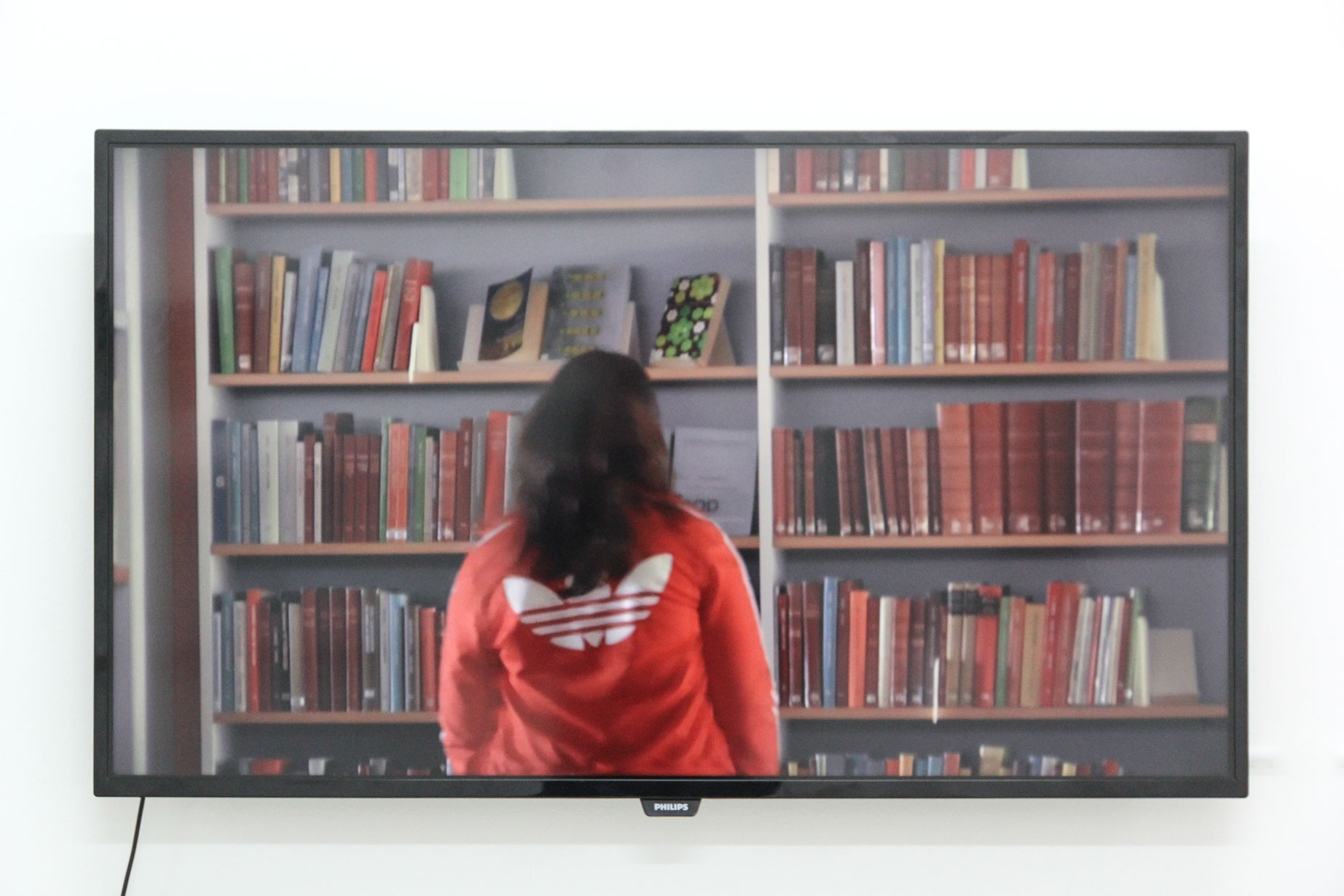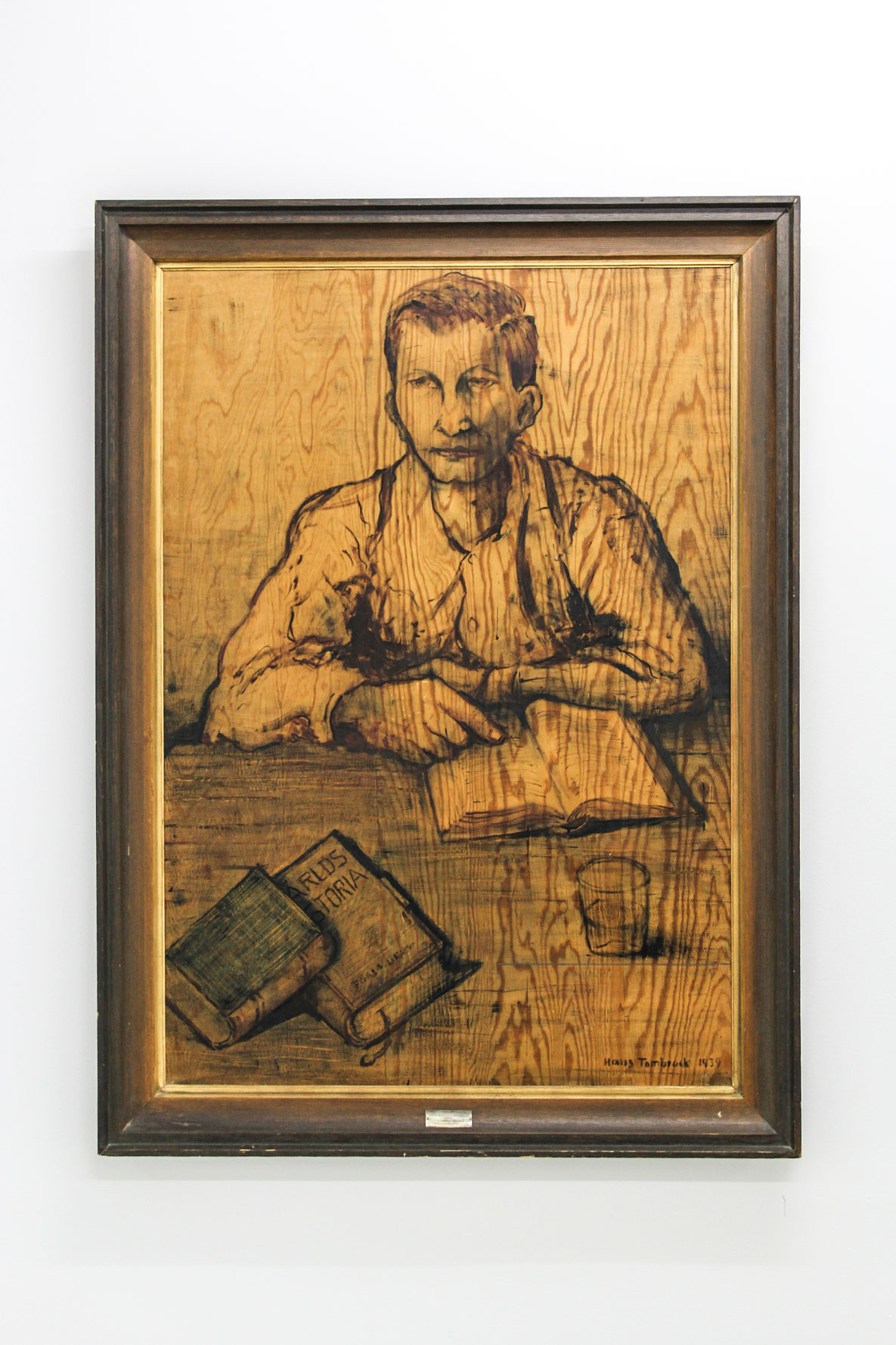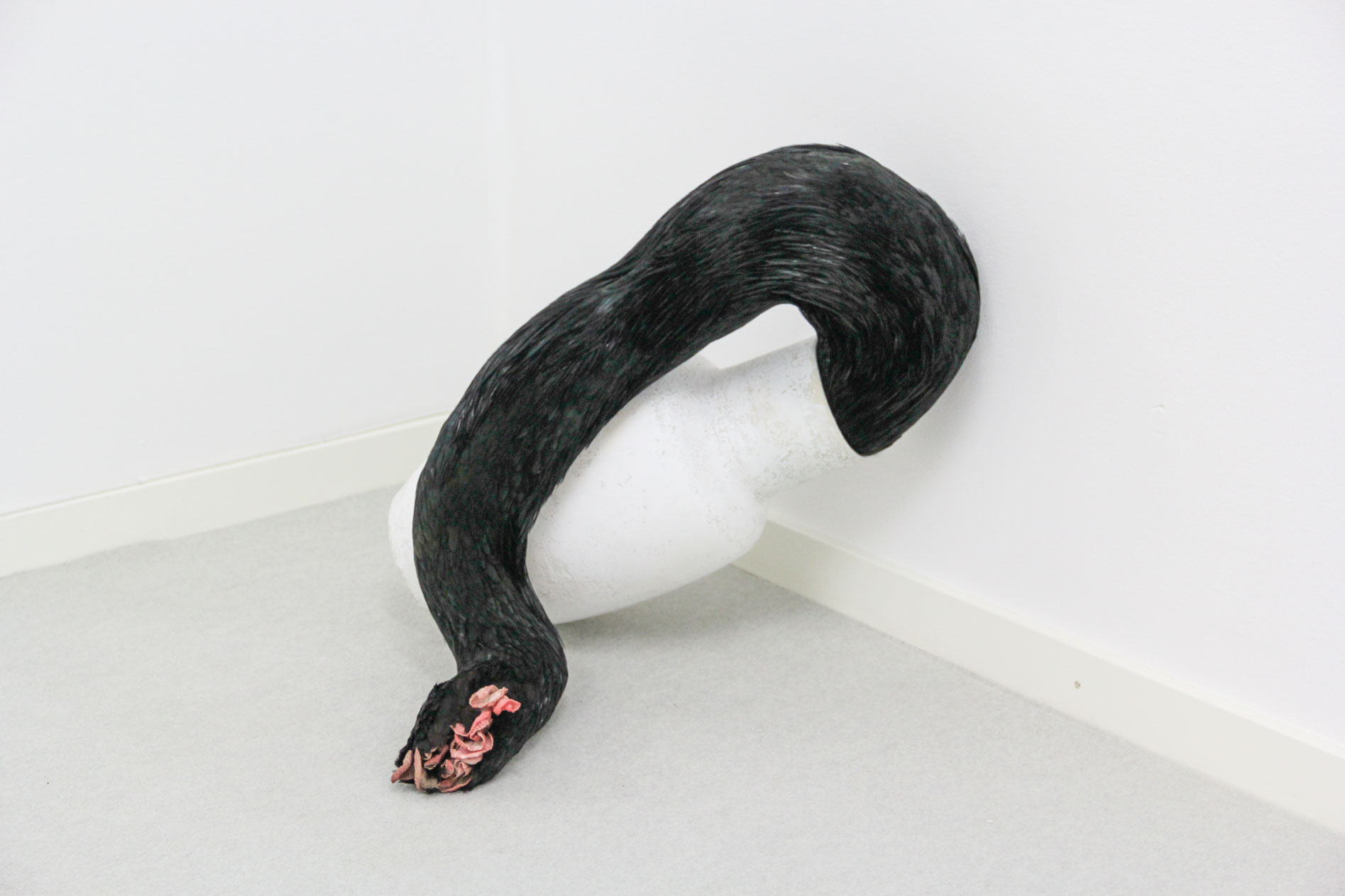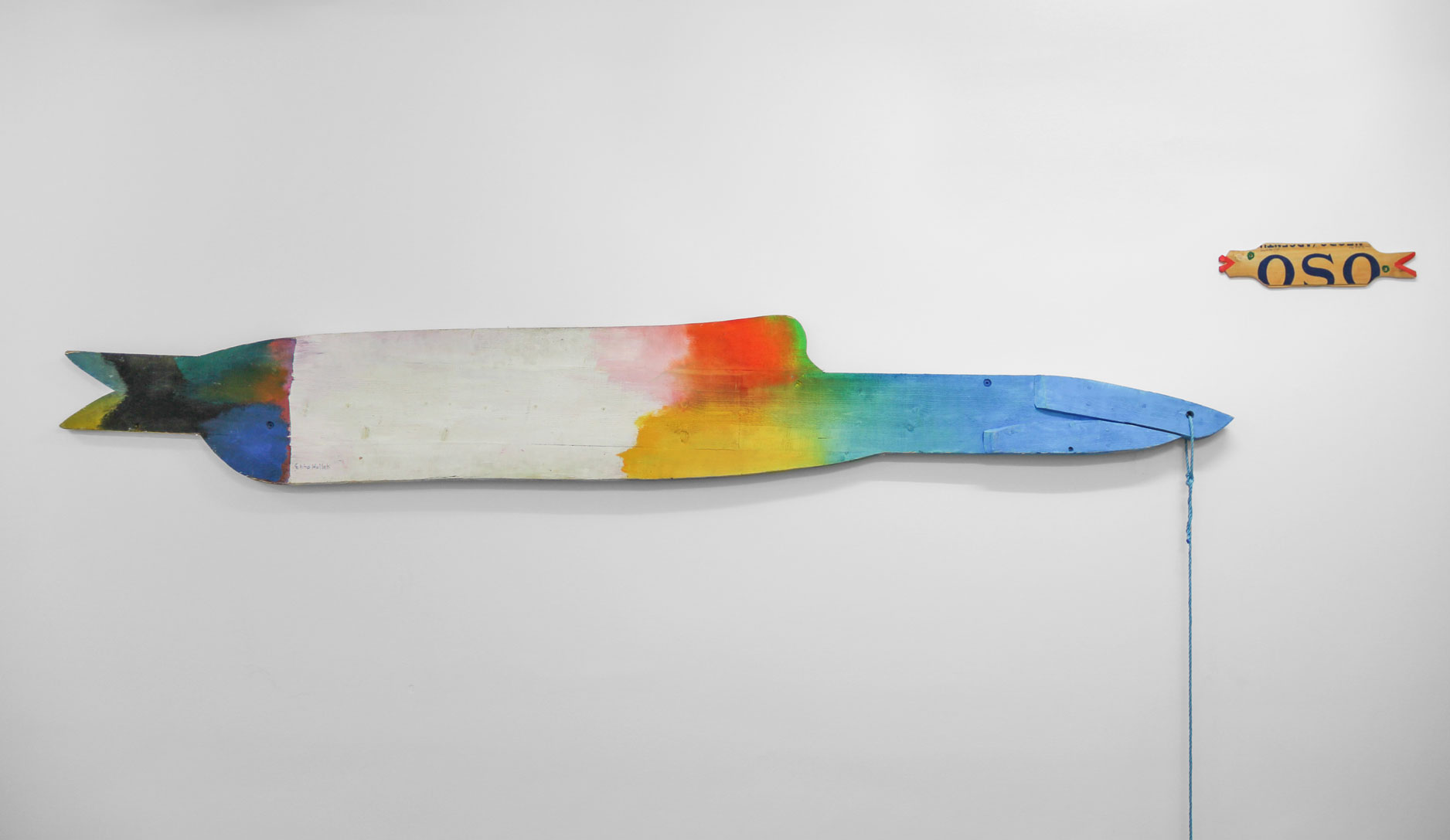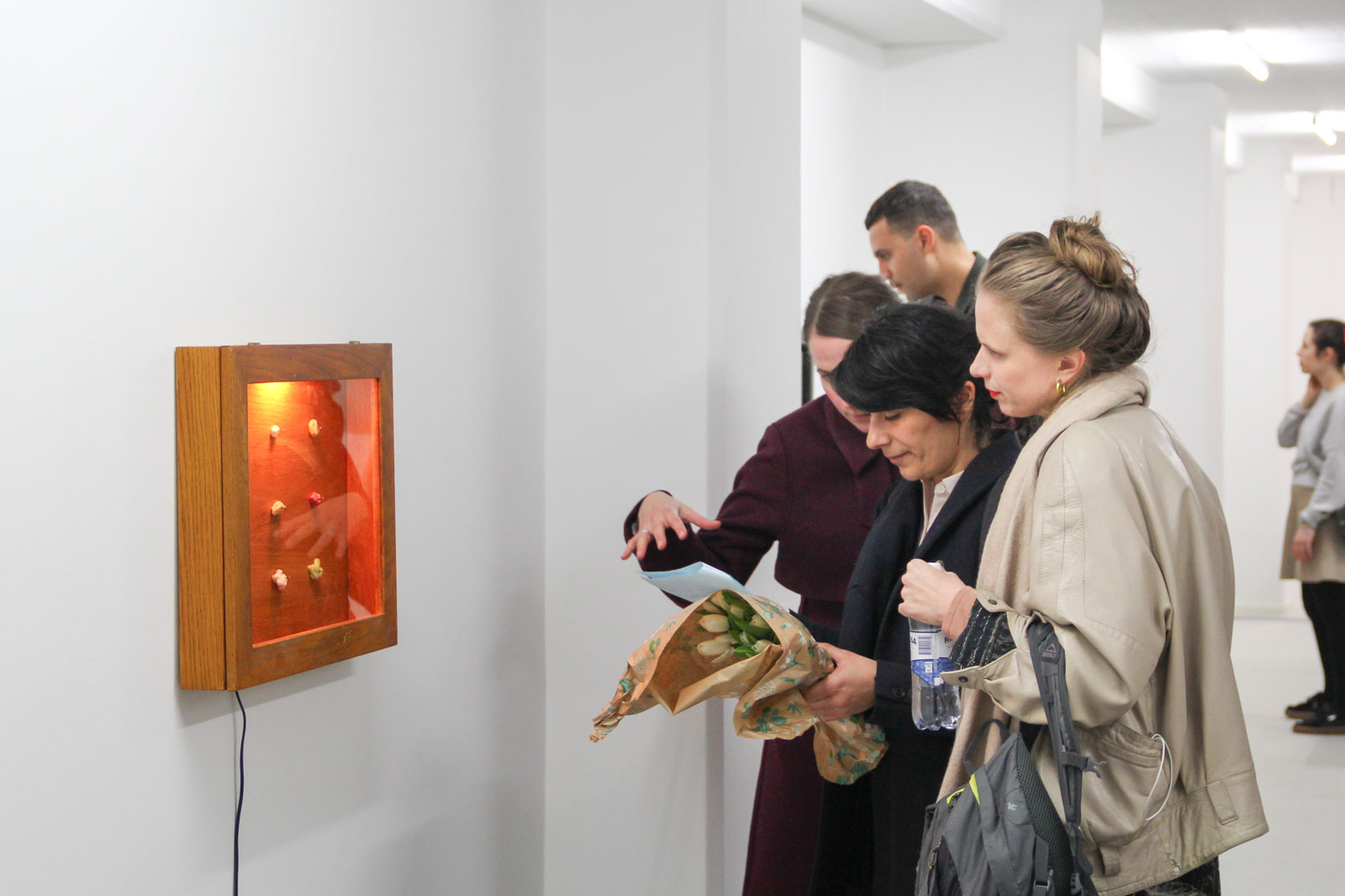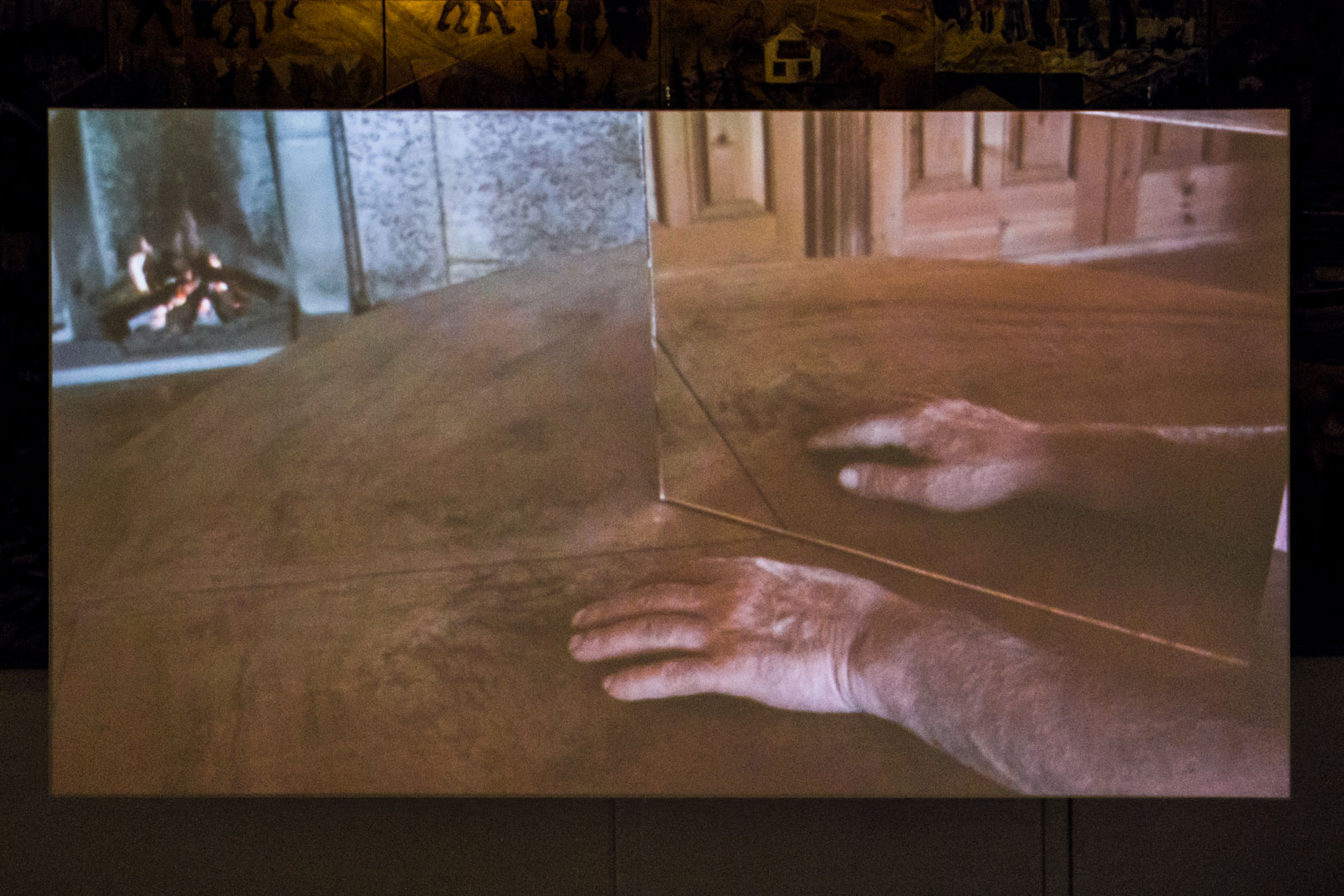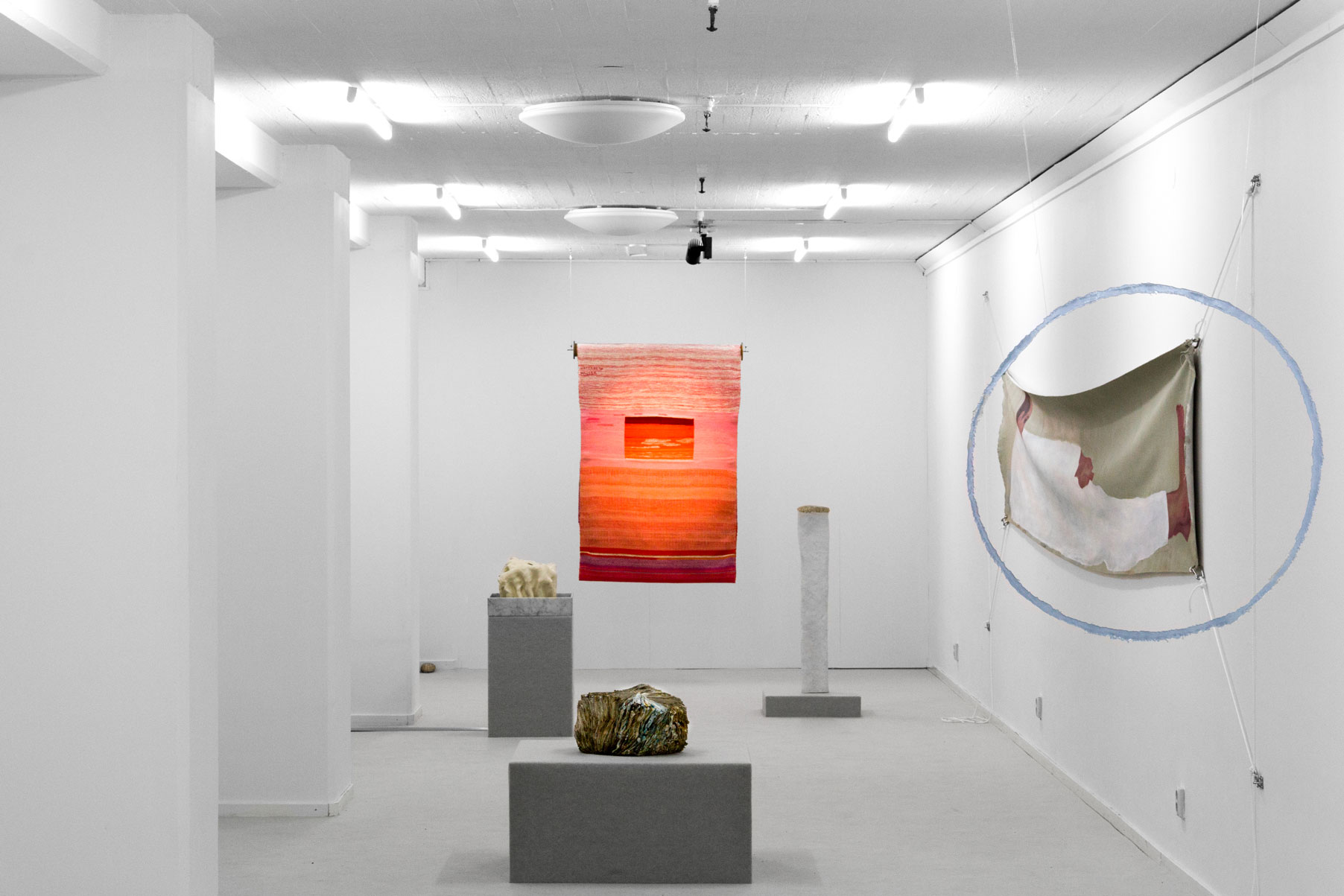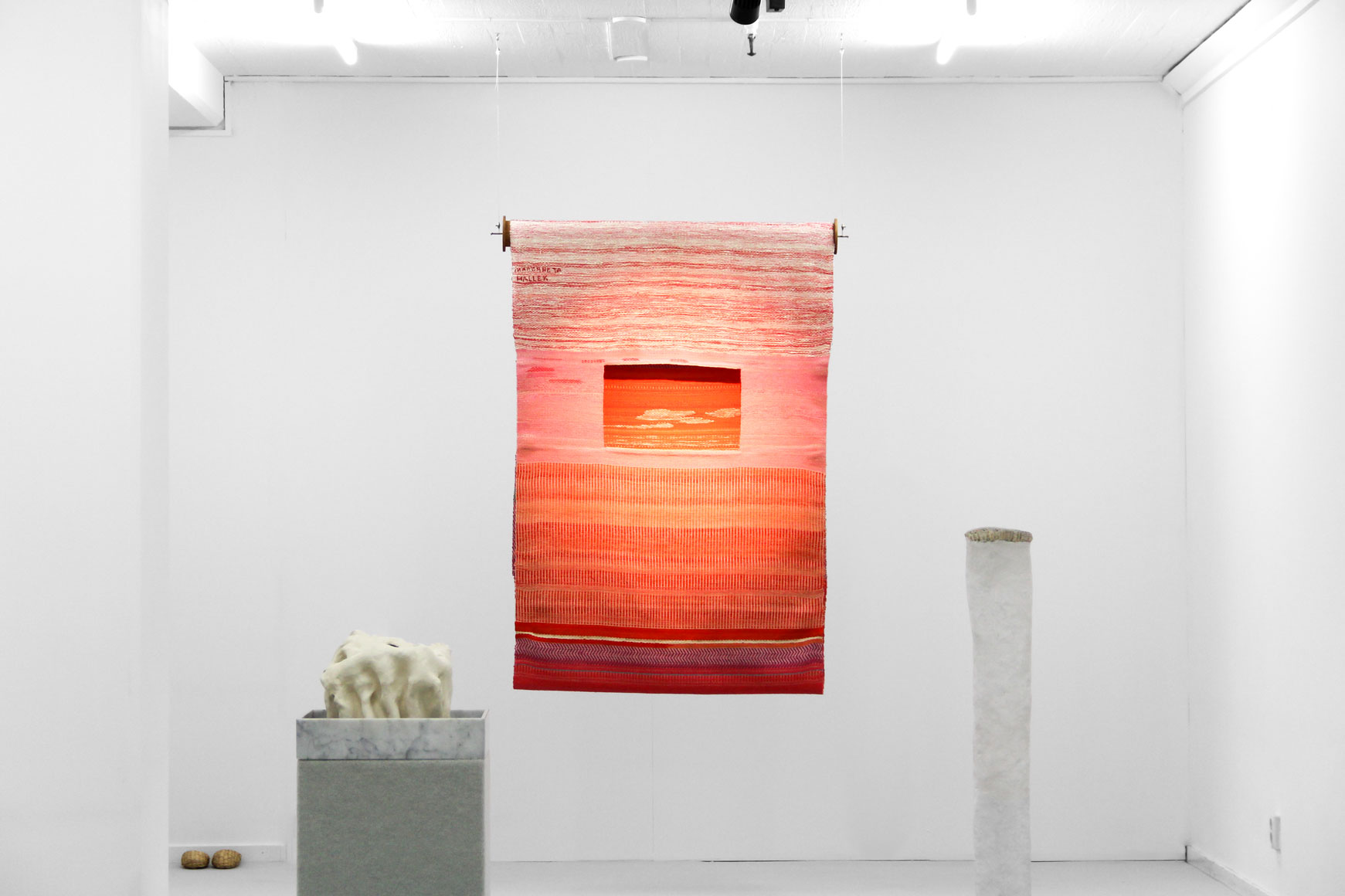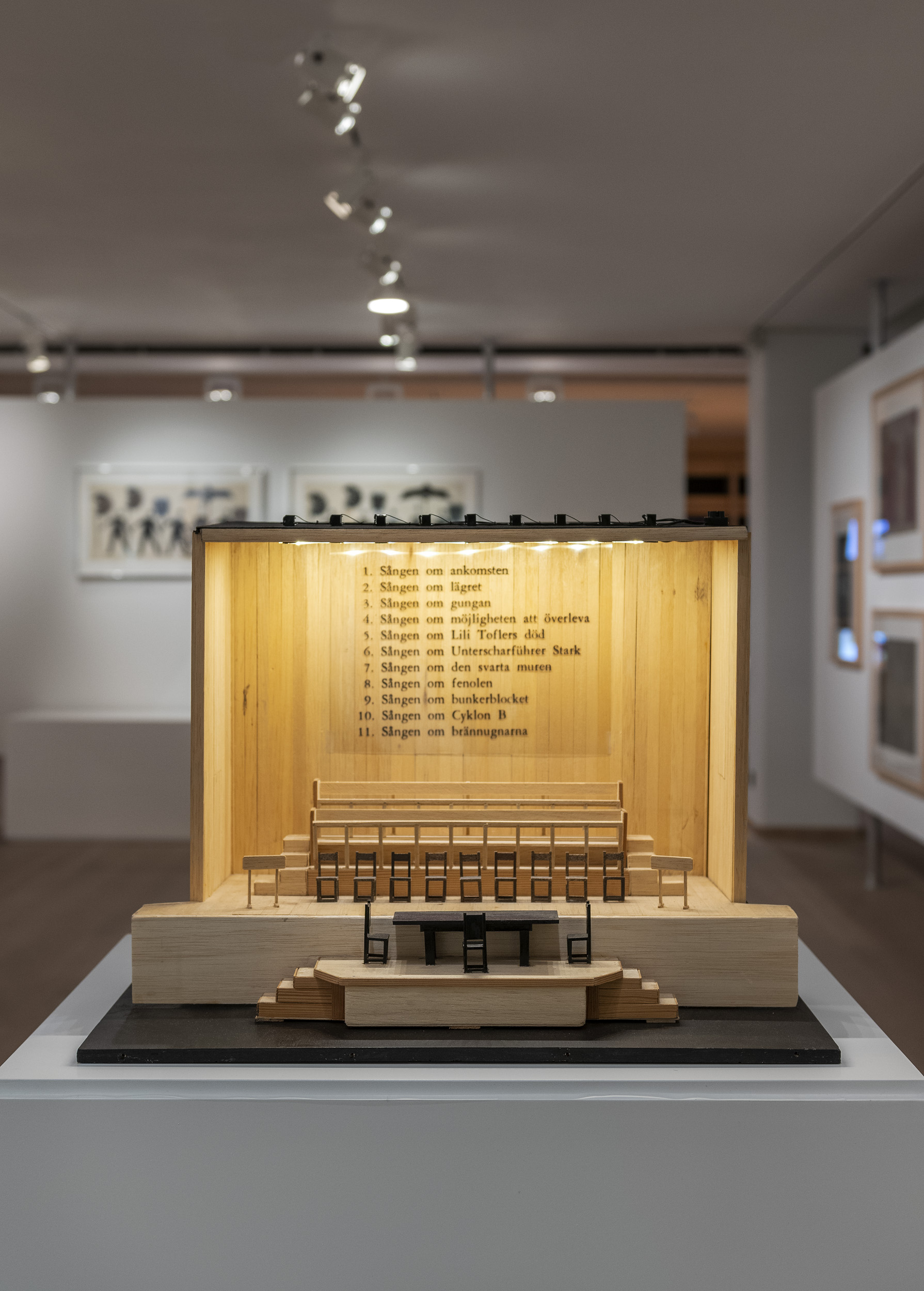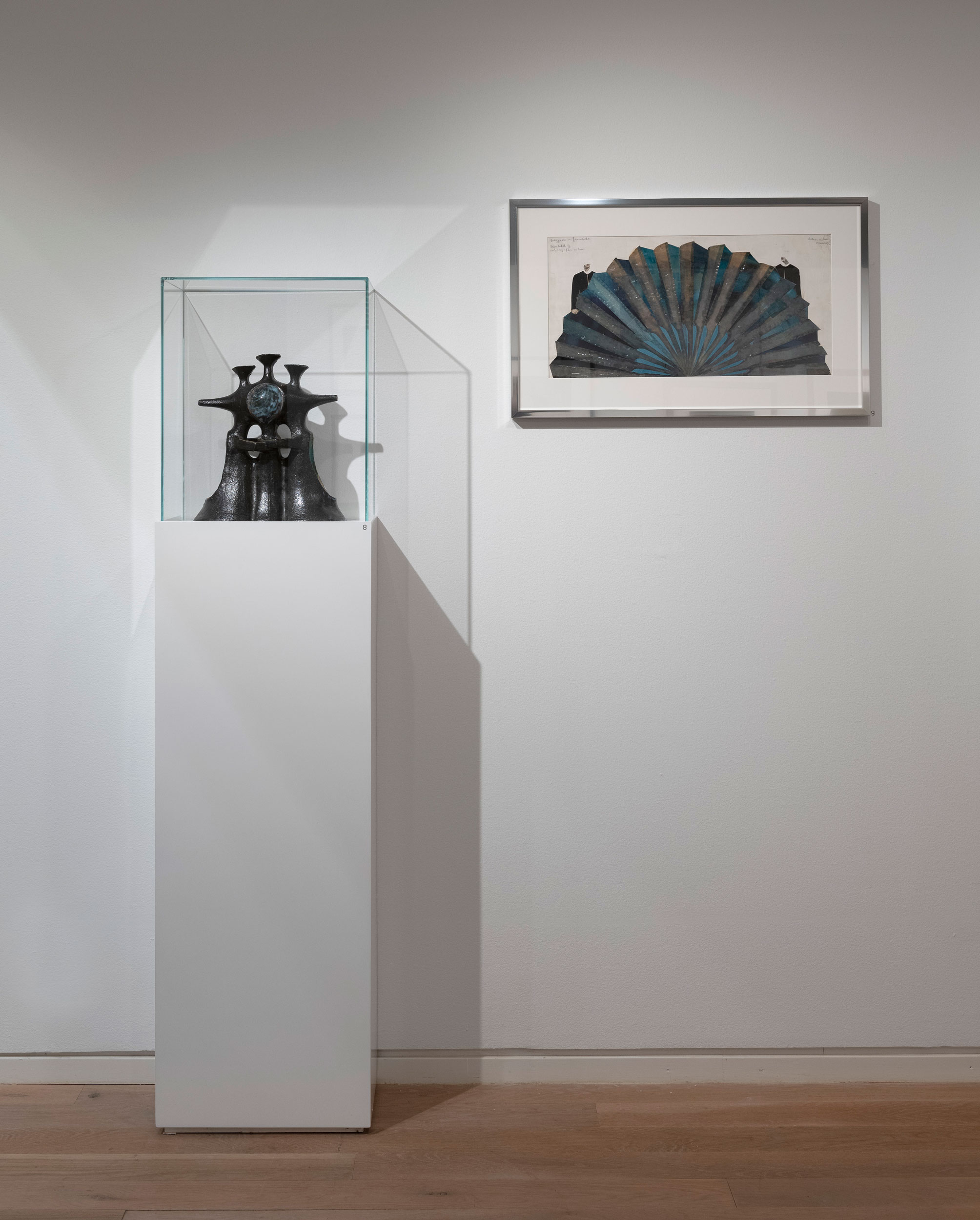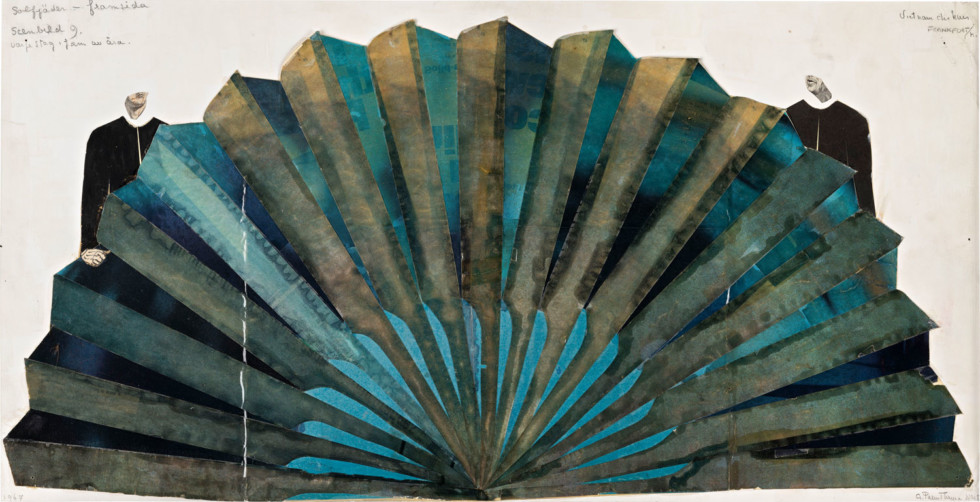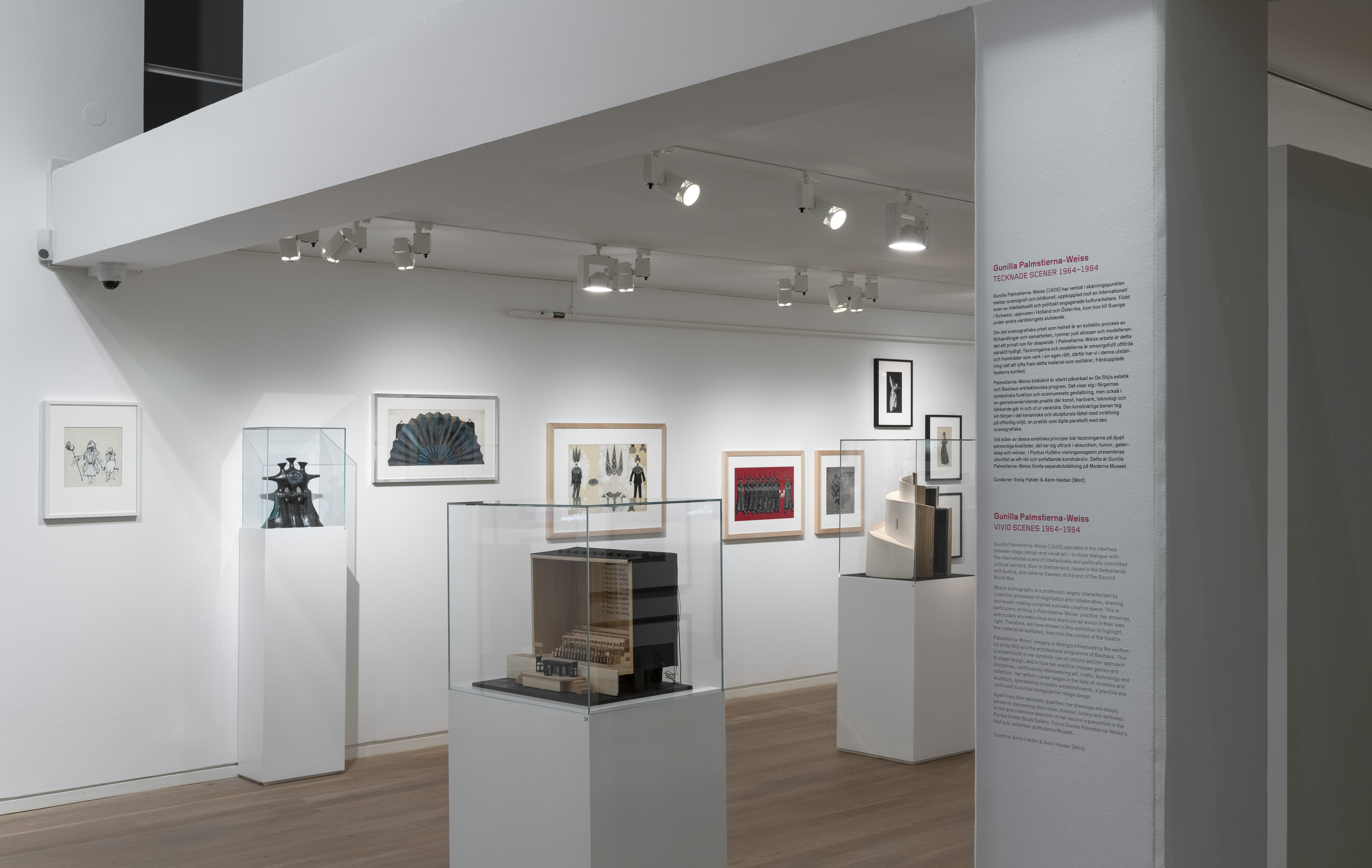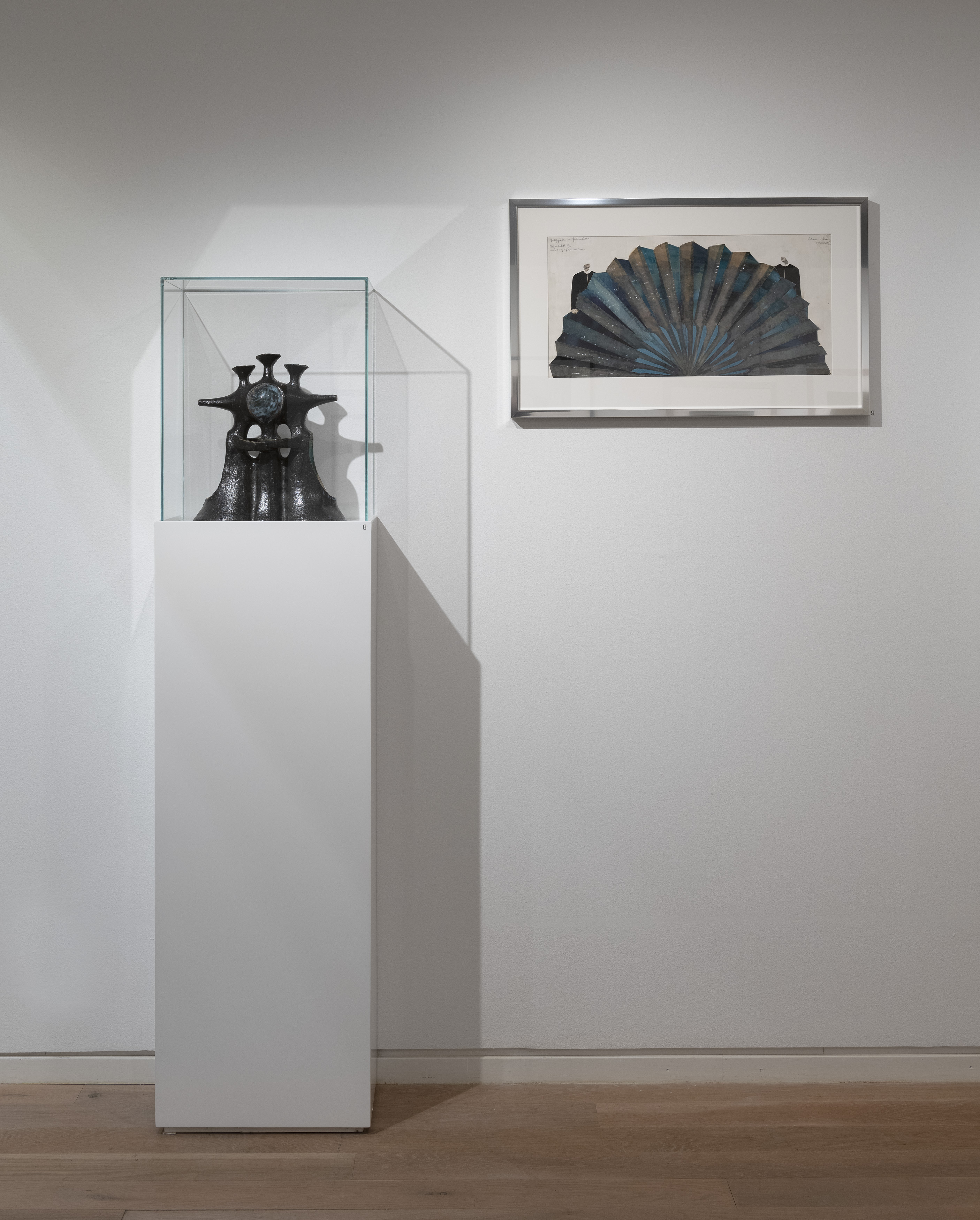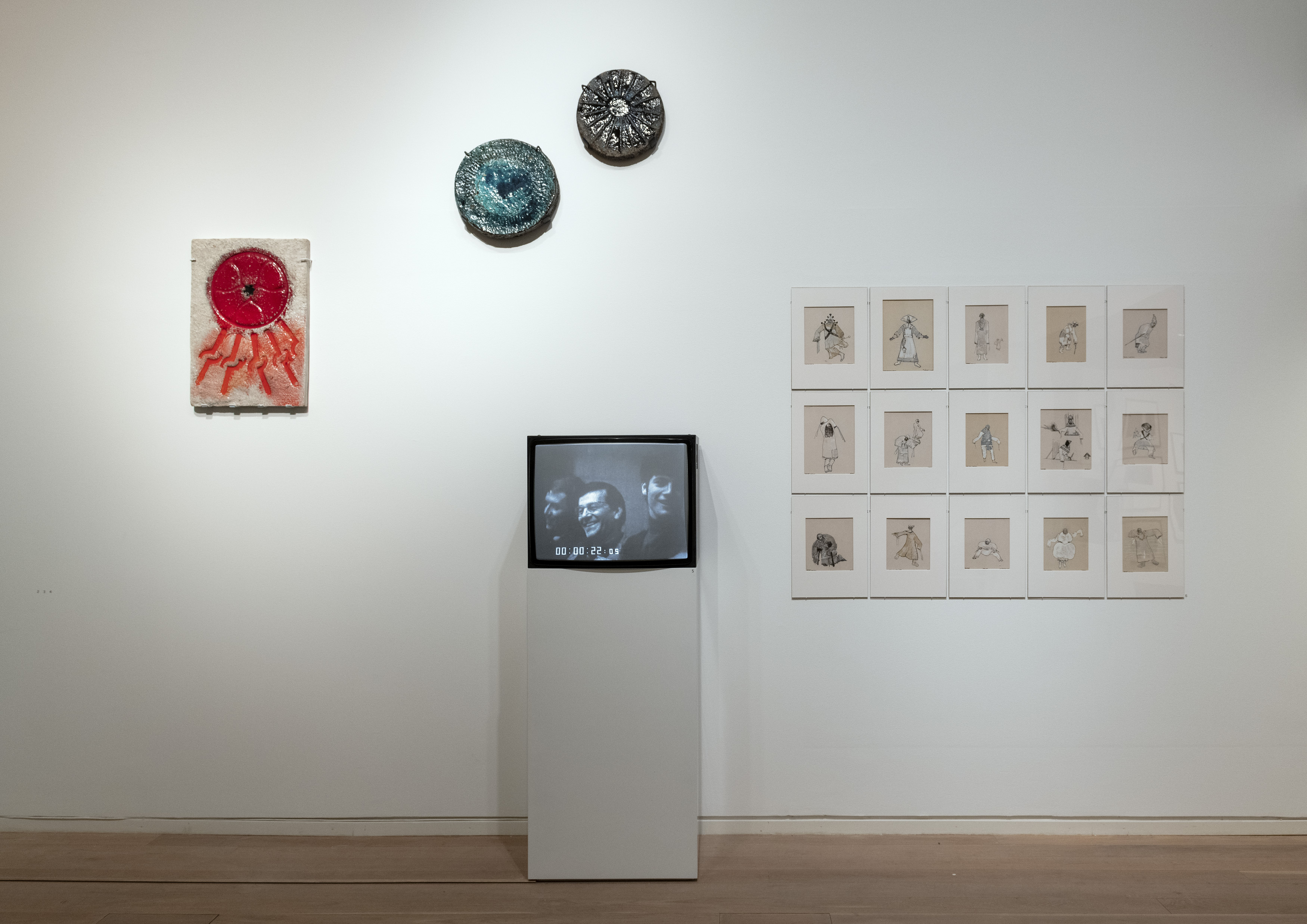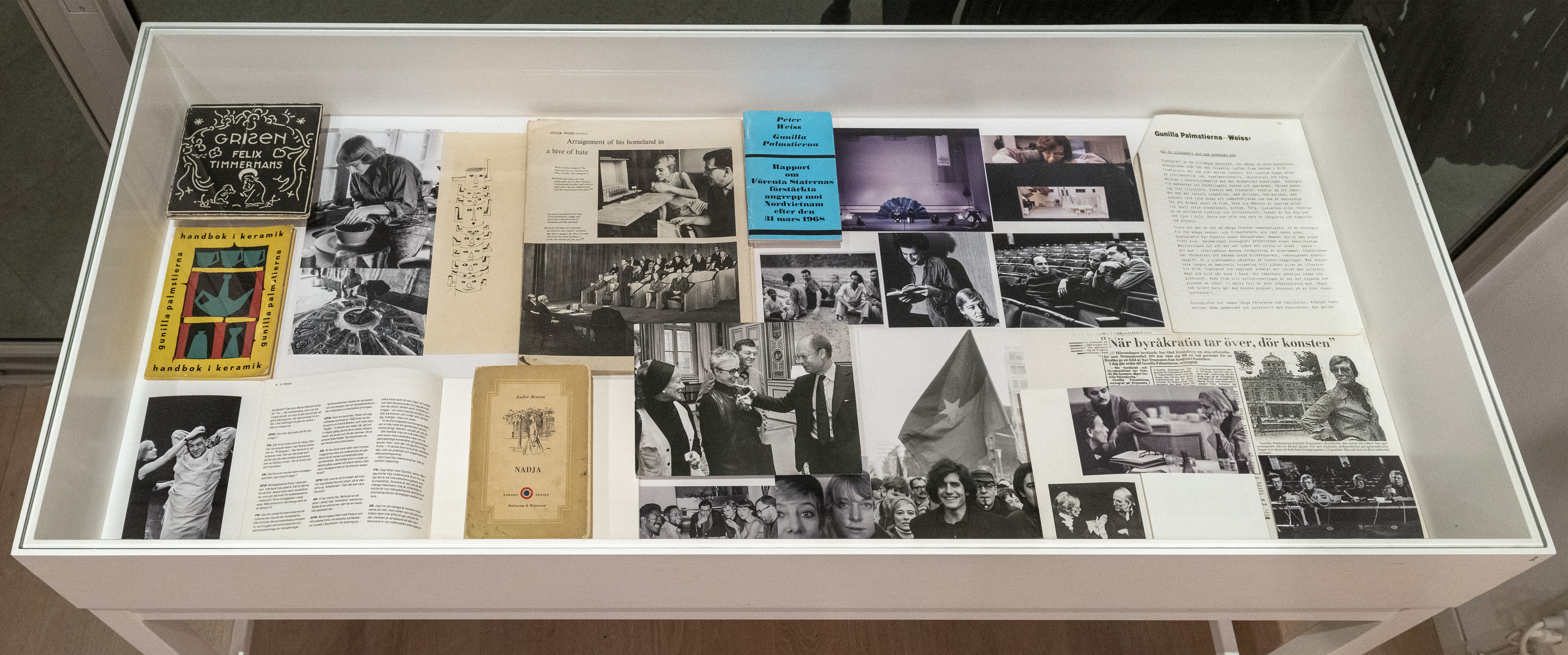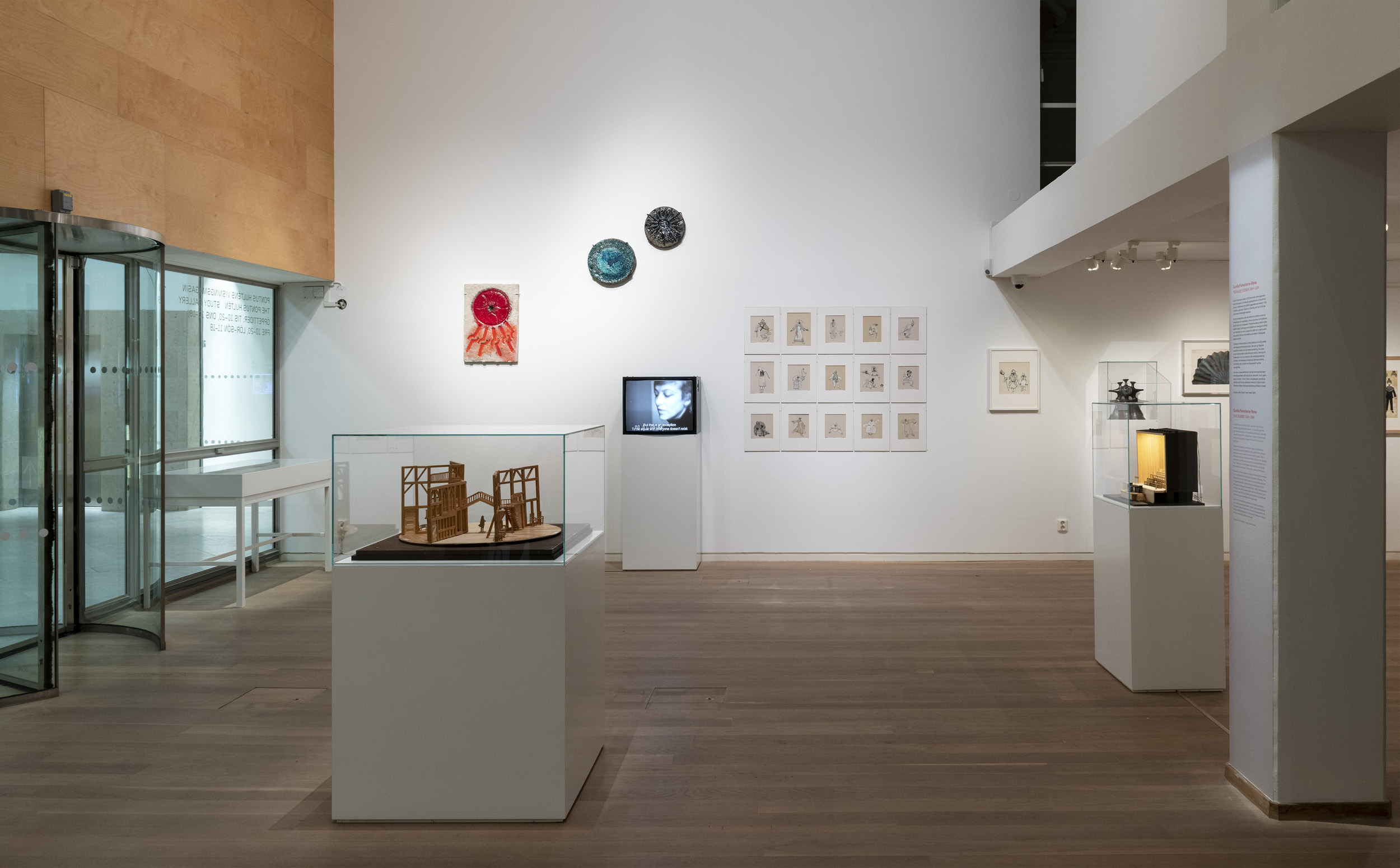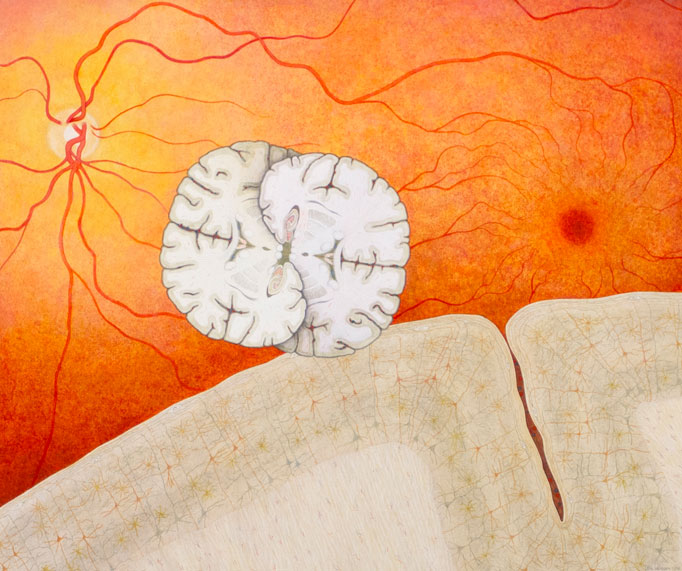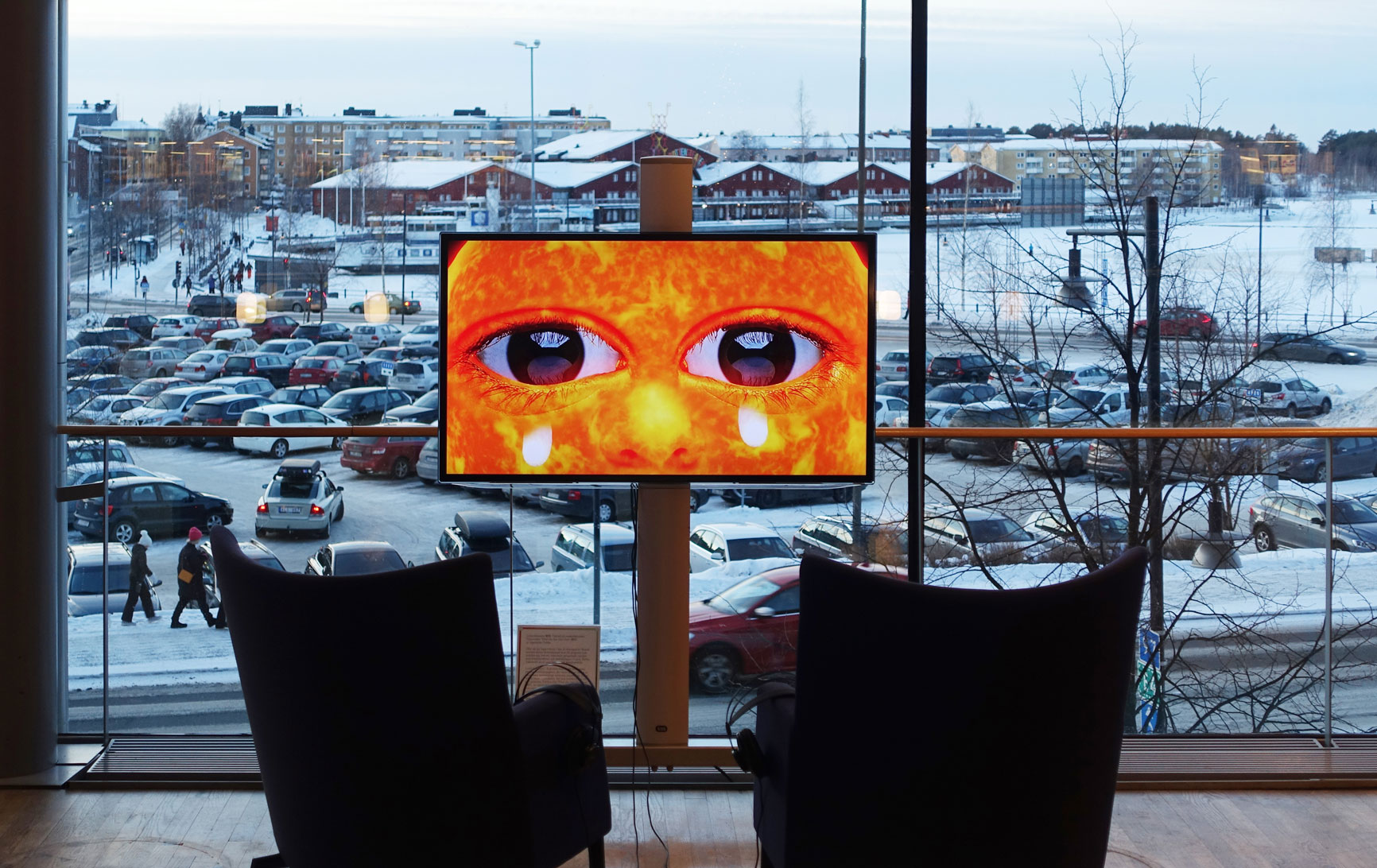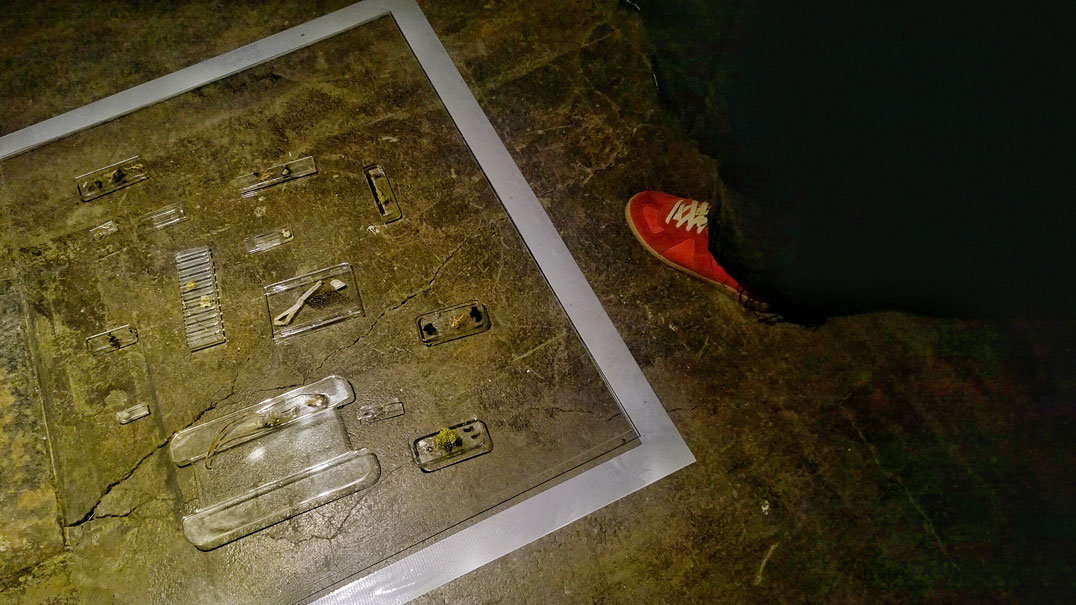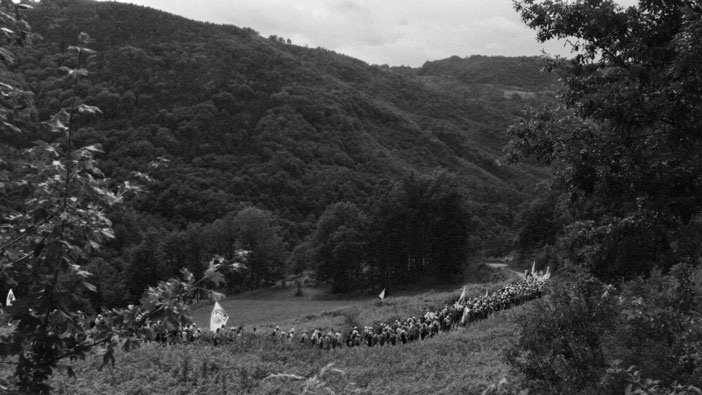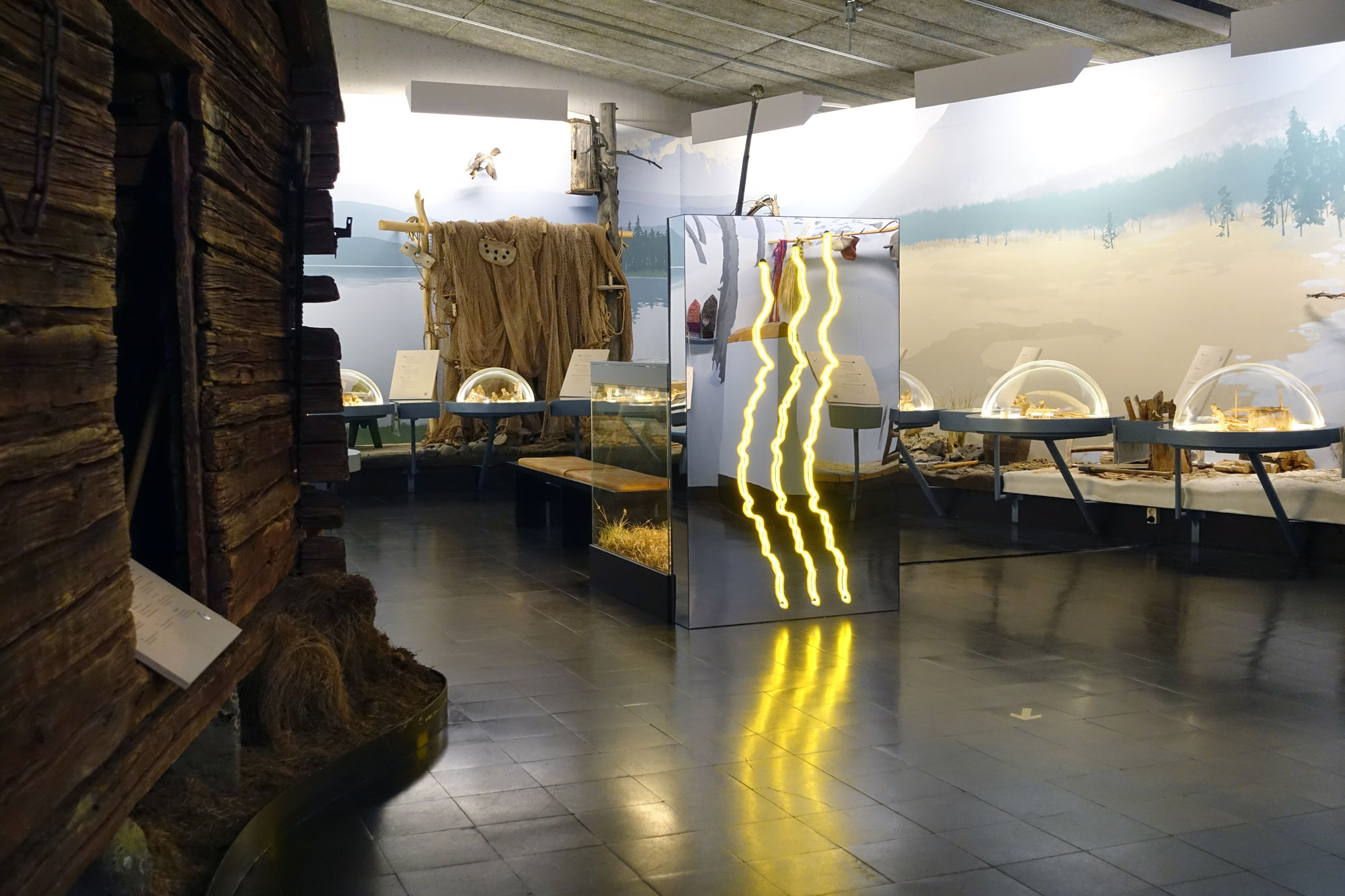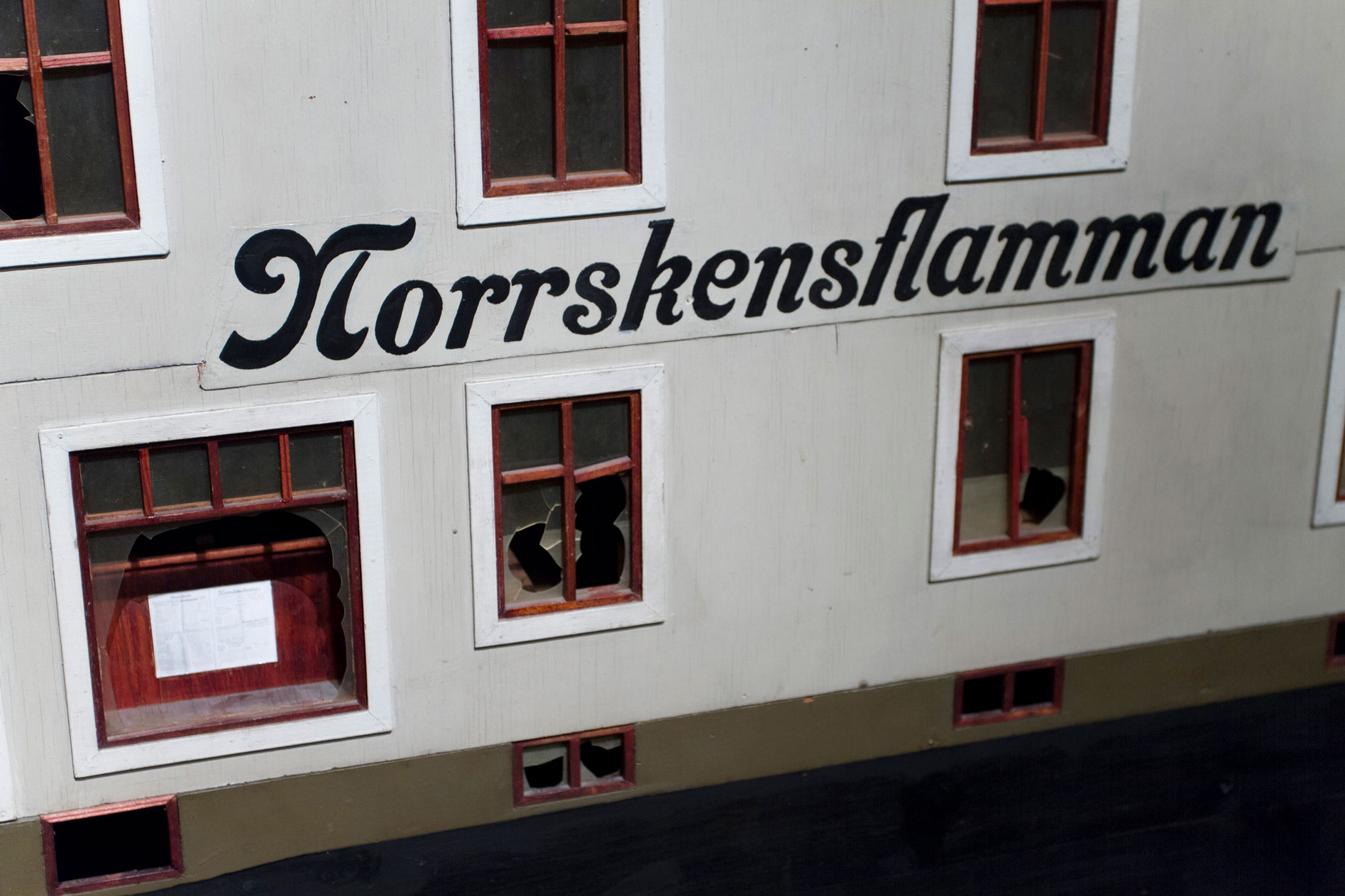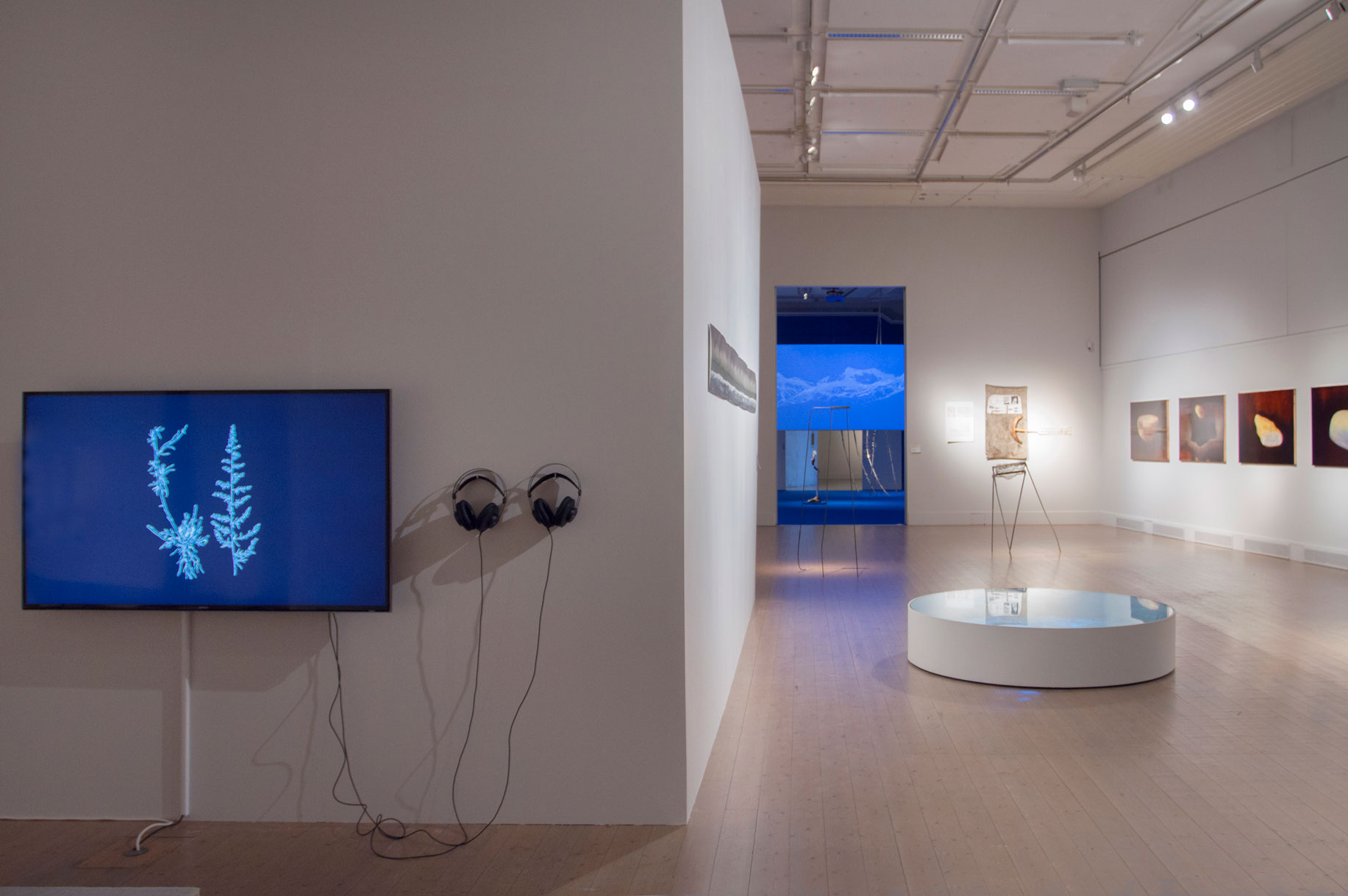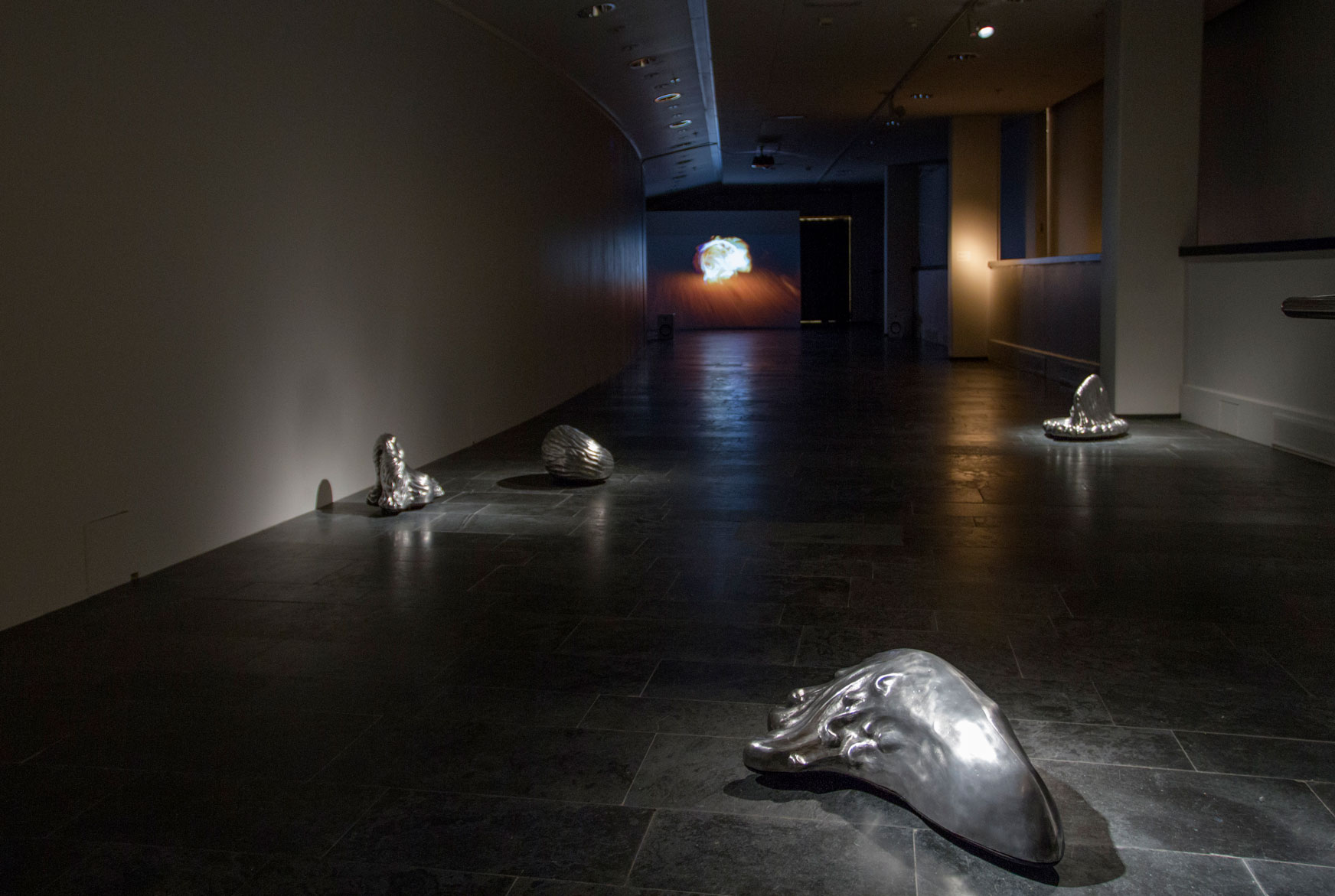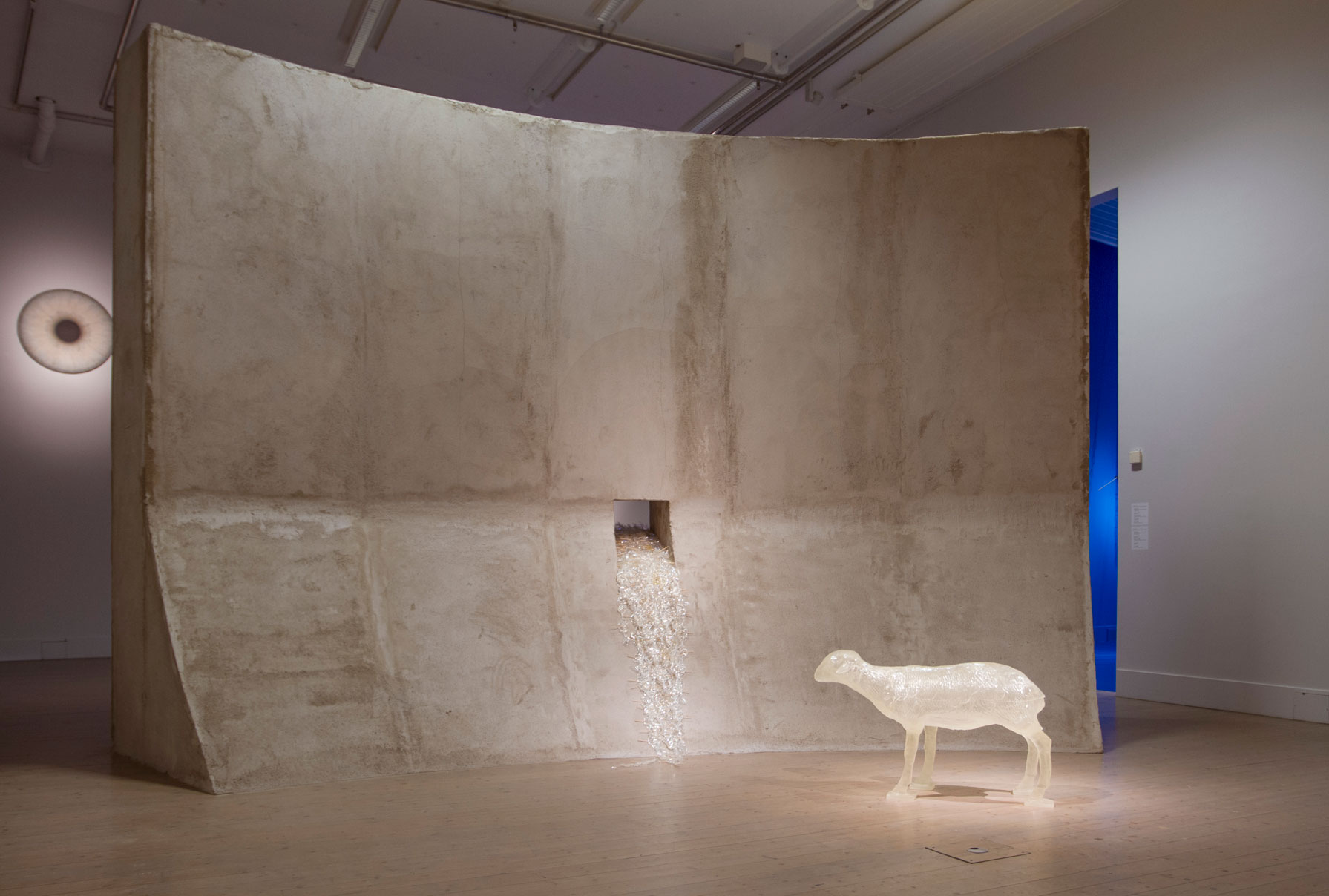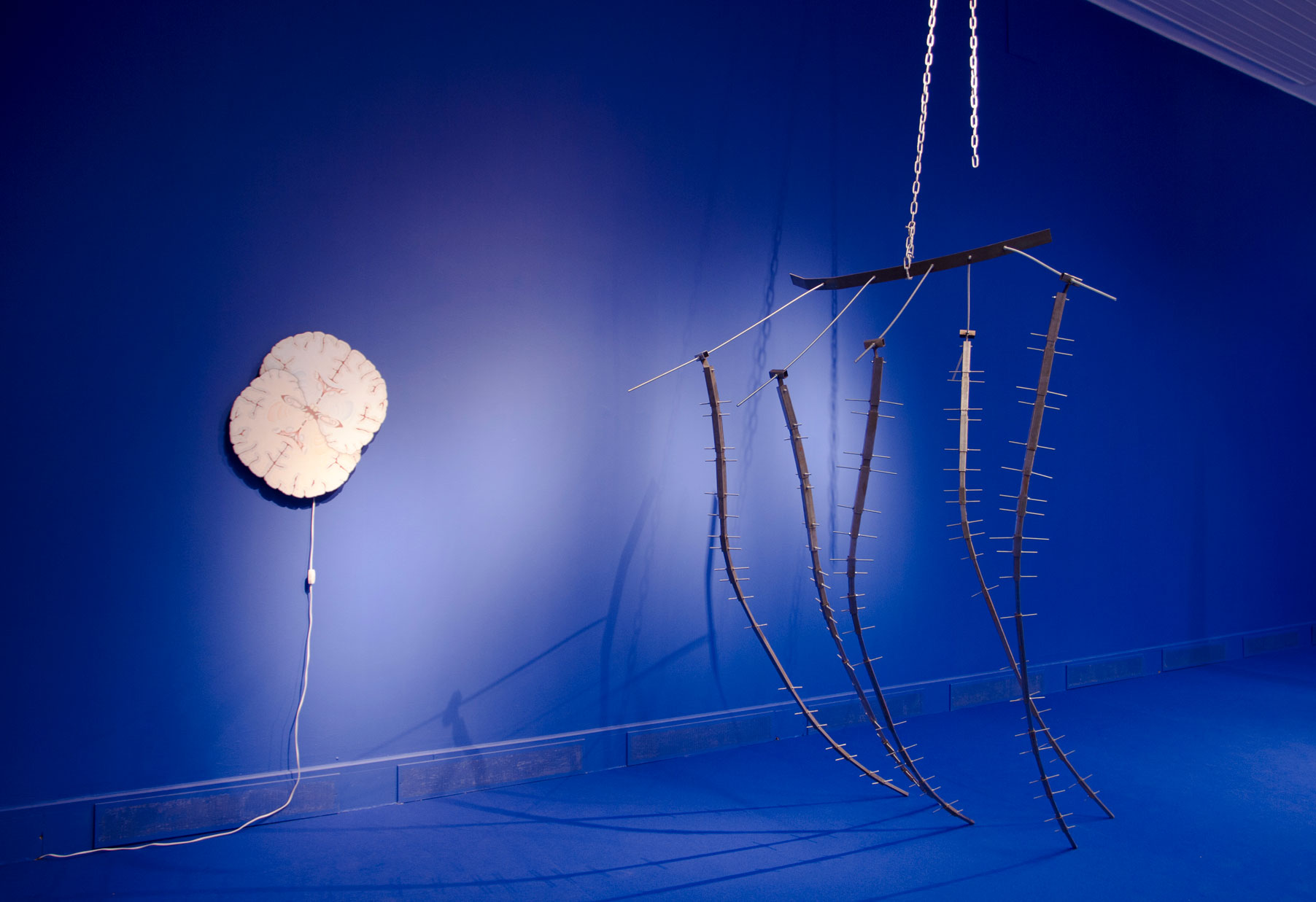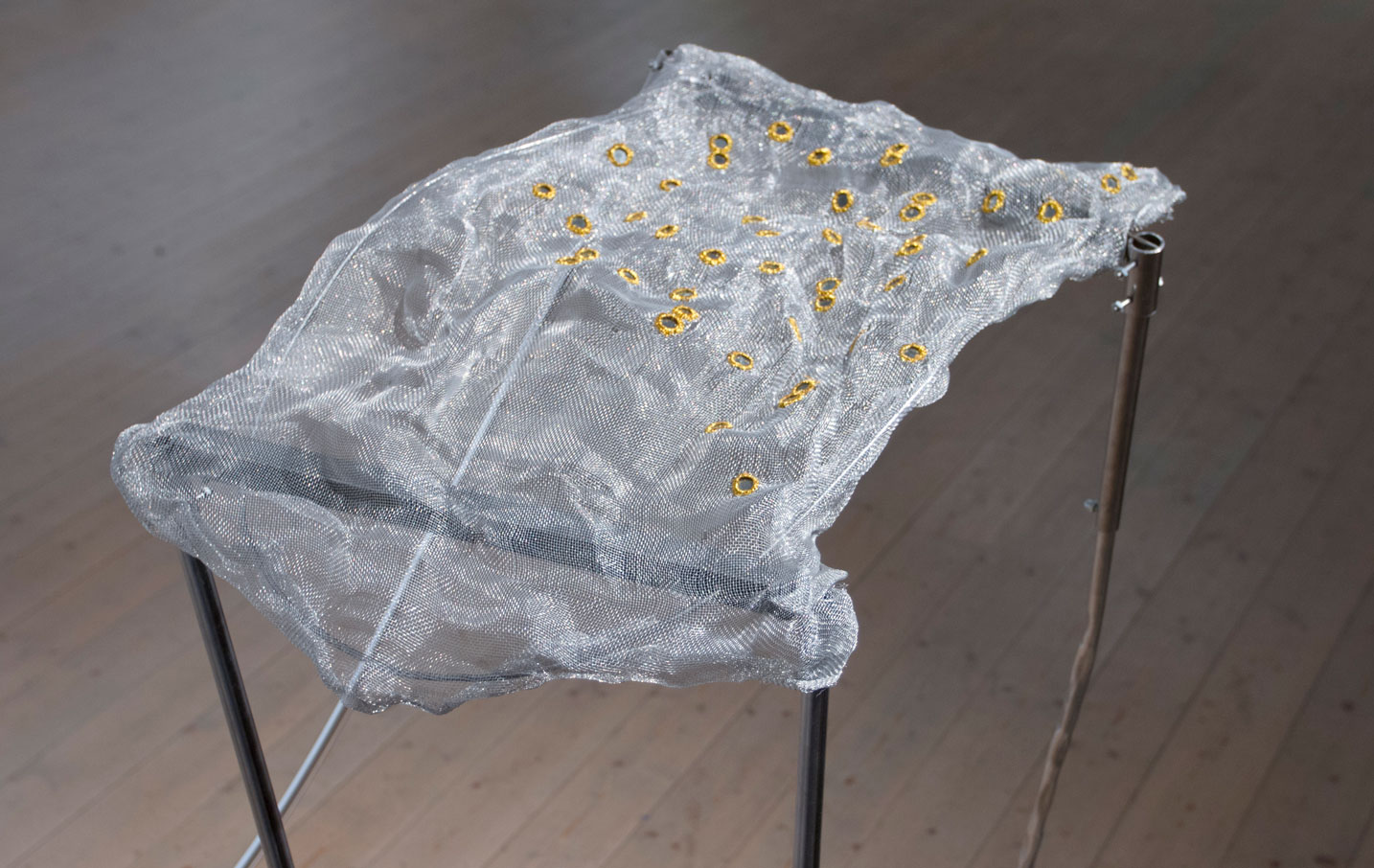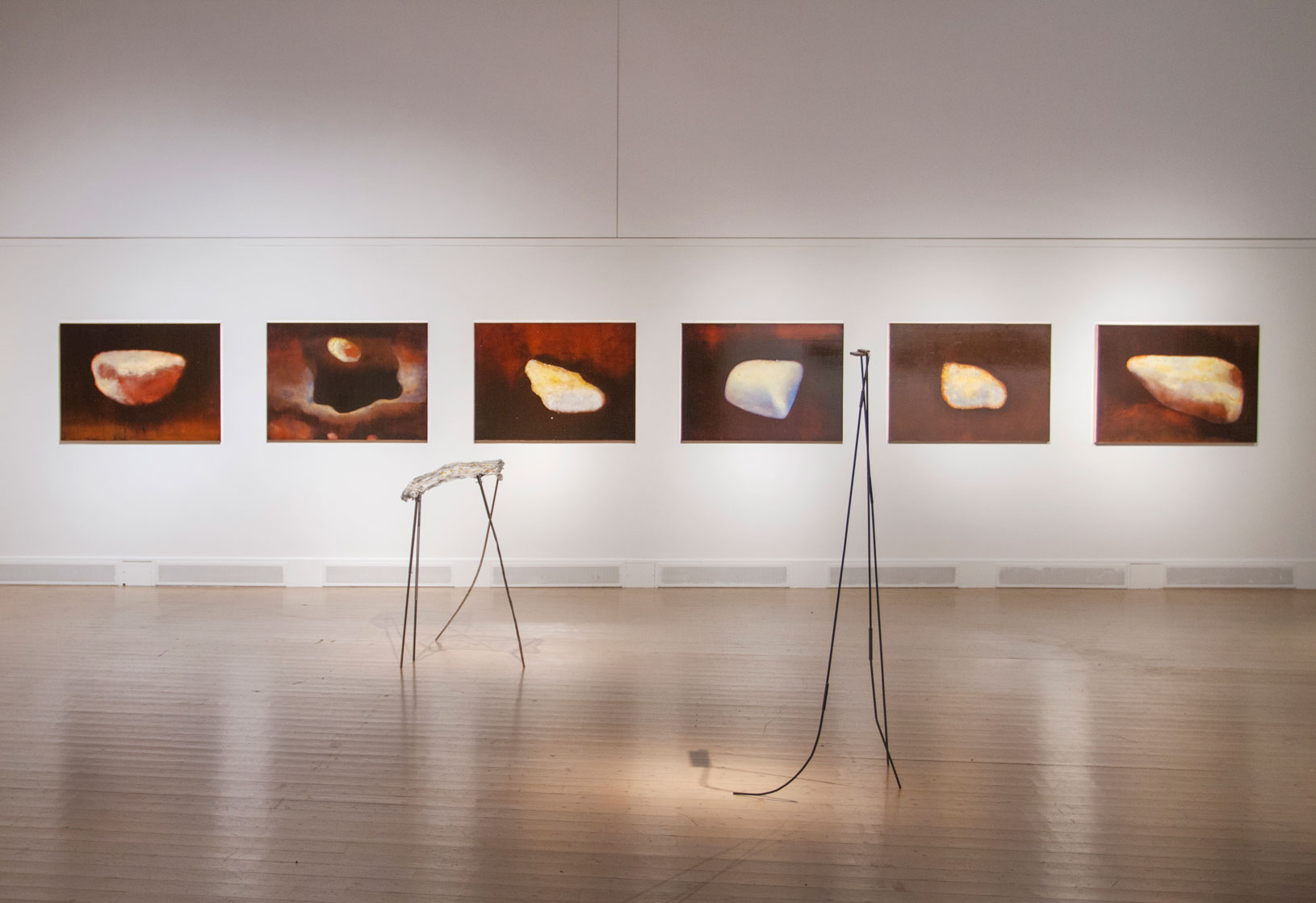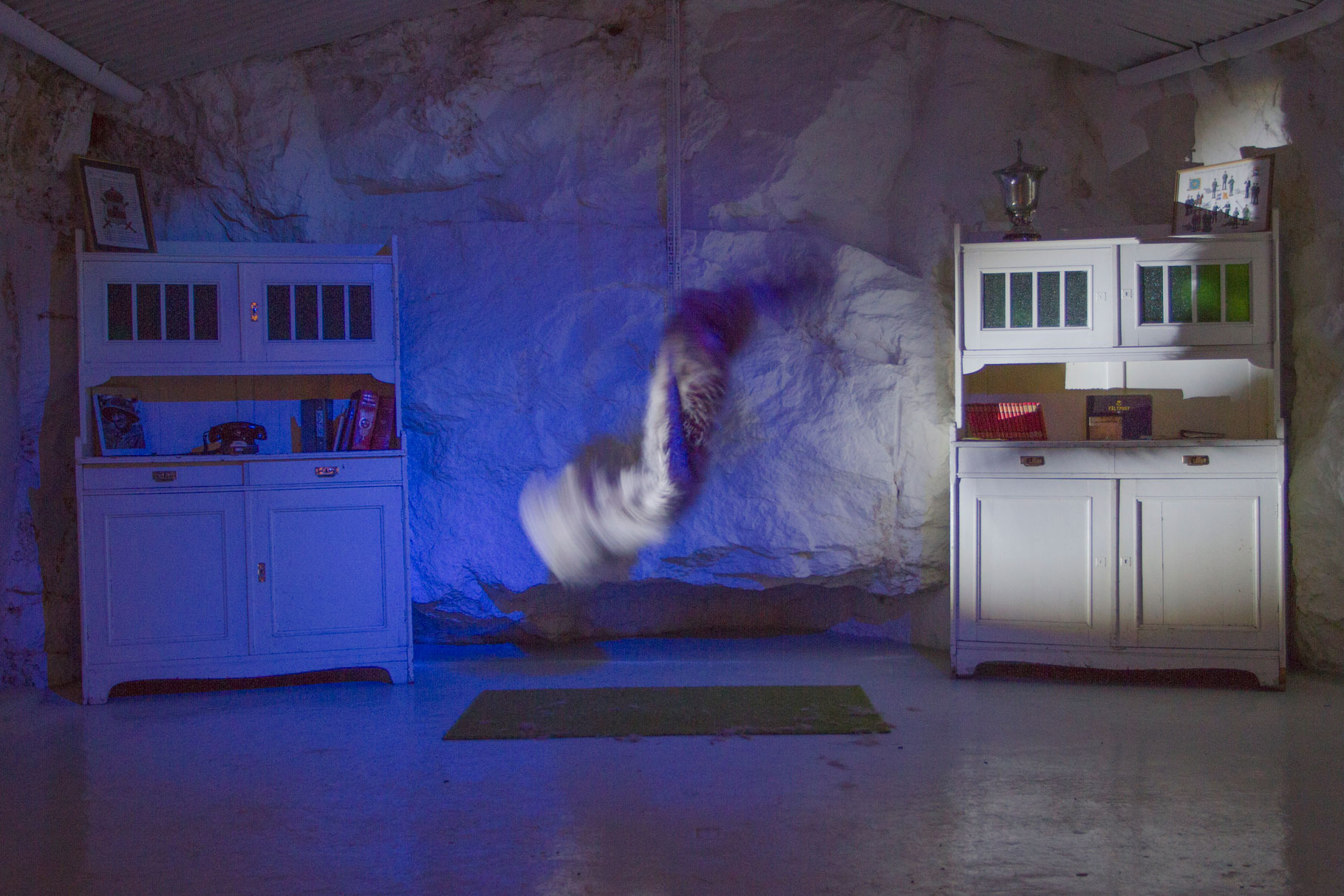A film screening and discussion curated by Sarah Browne and Jenny Richards
Category: 2019
Learning through struggle: Swedish dockworkers union and the right to strike
with Benj Gerdes, a representative from Svenska Hamnarbetarförbundet and Michele Masucci
Konstfacks vårutställning 2019: Huset fullt
This year, the Degree Exhibition has been curated by Emily Fahlén and Asrin Haidari whose method is to dig where they stand and, through dialogue with the surrounding context, understand the site’s specific relationships, historical connections, conflicts and opportunities.
The exhibition is taking place in every imaginable nook and cranny of the school – in the basement, library and Mandelgren lecture hall, in corridors and studios. As a visitor, we want you to be able to move freely between the different spaces. The school’s various disciplines are separated in order to provide some clarity over the diversity of expressions that is Konstfack.
In the works by 179 students, it is of course difficult to trace a common theme, but they include an interest in translation as an artistic practice, the language of emotions, the slow processes of craft and the role of design in the age of climate change. At the same time, we have actively chosen to look for where in the school the critical discourses take place, in which spaces and from which perspectives they occur. One such example is the POC student collective Brown Island. The cross-disciplinary group arranges exhibitions and has recently published a handbook with lessons on decolonising processes in educational environments, Brown Island in the White Sea: A Handbook for a Collective Practice. As part of the Degree Exhibition, we have, in dialogue with the group, allowed texts from the book to sneak into the exhibition’s infrastructure. With this intervention, we as curators wish to highlight a greater issue about a school’s historiography and how initiatives such as these can rub off on an institution’s existing structure. What stories are hidden in the school’s architecture, systems and inhabitants?
The air which the autonomy of the people breathe
Giorgi Gago Gagoshidze, Patrick Kretschek, Susanna Jablonski, Ruben Nilsson, Måns Wrange, Erik Öberg, Margareta Hallek, Hans Tombrock & Bertolt Brecht, Helena Lund Ek, Enno Hallek and unknown artist
12.4–12.5 2019
Mint, ABF Stockholm, Sveavägen 41, Stockholm
Mint’s first exhibition looks at a subject fundamental to our lives – both as critical beings, and for our recuperation: time after work. The different works relate to the theme in direct and indirect ways, through both documentary and abstract expressions. They are about transformation, hobbies, reading and resting. They are about stretching, furnishing, educating oneself and remembering. Quiet reflections on the materials and settings of leisure but also the societal premises which enabled them in the first place. Pension, holidays and time off are the fruits of the struggles of the workers movement – the basis of rest was won by fighting. The exhibition could be seen as a situation of different ideas being started, a place which, like leisure itself, is allowed to chose its own strange roads – perhaps unclear, maybe meaningful, perhaps in time becoming crucial. Or in the words of Gregor Paulsson, initiator of a significant 1936 exhibition of ideas about leisure in southern Sweden: “Leisure is the premise of freedom, the air which the autonomy of the people breathe.”
Vivid Scenes
Gunilla Palmstierna-Weiss
30.3–29.9 2019
Moderna Museet, Exercisplan 4, Stockholm
Gunilla Palmstierna-Weiss, born in 1928, has operated in the interface between stage design and visual art – in close dialogue with the international scene of intellectually and politically committed cultural workers. Born in Switzerland, raised in the Netherlands and Austria, she came to Sweden at the end of the Second World War.
Palmstierna-Weiss belonged to the circle of artists and creative workers at the centre of Moderna Museet and its activities that were emerging in the early 1960s. Her commitment to art and politics has involved her in student riots, liberation struggles and cultural hubs all over the world, and always, somehow, in the midst of where it was all happening.
Gunilla Palmstierna-Weiss is primarily known as a stage designer, a profession that is largely characterised by collective processes of negotiation and collaboration. Drawing and architectural models, however, are two activities that comprise a private creative space. This is particularly striking in Palmstierna-Weiss’ practice: her drawings and models are meticulous, exuding a delight in the media, encapsulated in time, research and ideas. They stand out as works in their own right, and this exhibition gives you the opportunity to experience them outside the context of the theatre.
Her imagery is strongly influenced by the aesthetics of the Dutch De Stijl movement and the German Bauhaus school’s architectural programme, both in the symbolic function of colours and the approach to stage design – where each object and detail must serve a purpose. These schools also propounded the idea of artistic mobility; Palmstierna-Weiss’s practice crosses genres and disciplines, continuously interweaving art, crafts, technology and reflection. Her professional career began in the field of ceramics and sculpture, specialising on public embellishments, a practice she continued to pursue alongside her stage design.
Apart from their aesthetic qualities, her drawings are deeply personal, expressing absurdism, lunacy, humour and darkness. In visual dramas, the individual characters perform grimaces, movements and physical ailments, along with collective situations where bodies build spaces in gatherings, armies and organisations.
A rich and extensive selection of her oeuvre is presented in the Pontus Hultén Study Gallery. This is Gunilla Palmstierna-Weiss’ first solo exhibition at Moderna Museet.
Luleå Biennial 2018: Tidal Ground
Francis Alÿs, Henrik Andersson, Marwa Arsanios, Monira Al Qadiri, Filipa César & Louis Henderson, Anna Dacqué, Vishal K Dar, Ingela Ihrman, Isak Hall, Louis Henderson, Susanna Jablonski, Lap-See Lam, Hiwa K, Hanni Kamaly, Britta Marakatt-Labba, Nikos Markou, Olof Marsja, Didem Pekün, Katarina Pirak Sikku, Agnieszka Polska, Raqs Media Collective, Residence-in-Nature, Neda Saeedi, Karl Sjölund, Zhou Tao, Alexandros Tzannis, Ulla Wiggen, Susanne M. Winterling, Anja Örn
17.11 2018–17.2 2019
Norrbotten, Sweden
After lying dormant for five years, Scandinavia’s first art biennial was resurrected 2018 with Emily Fahlén, Asrin Haidari and Thomas Hämén as new artistic directors. Konstfrämjandet [The People’s Movements for Art Promotion] was the initiator.
The programme was spanning over a vast geographical area with art events and exhibitions in Luleå, Boden, Jokkmokk as well as in Kiruna and Korpilombolo. 37 artists participated in, eight of which contributed especially with commissioned works. The biennial also presented performances and public artworks, and arranged film programmes. In addition, an international conference on anti-fascist organisation among activists, artists and thinkers took place towards the end of the exhibition period.
Never did they know
what the conditions afford
in the darkness of winter *
In the darkest months of the year, November through February, Sweden’s northernmost territory, Norrbotten, sees only six hours of daylight. The Luleå Biennial 2018 coincides with this period, and therefore we have taken the darkness of the region as both a necessary and generative premise for our work and thinking.
The title of the biennial, Tidal Ground, refers to the gravitational force of the sun and moon—also known as body tide—that causes the earth’s solid surface to stir in a movement parallel to that of the oceans. Light and darkness take the place of one another in rhythmic unison with the surrounding landscape. The geographical position of Norrbotten, with its proximity to Finland and Russia, has historically made the area an active military zone. A loaded and strategic frontier from which a whole town, surrounded by five fortresses, emerged from the land to defend it against intruders. This area is rich in water, iron ore, and wood. The extraction of these resources has left deep wounds: silent rapids, gaping pits, a city collapsing into the ground. What role does darkness play in such stories?
The concept of darkness has predominantly negative connotations of fear and destruction. The biennial asks questions about what “dark times” may be said to entail: that social and political forces are also going through a period of tidal movement? Or that darkness is an ever-present condition for us to navigate? Can it, in that case, be understood as a projected space? A space that becomes one with time, where the senses are heightened and new contours may slowly become visible?
With Norrbotten’s landscape as our point of departure, and greatly inspired by its contemporary poets, a series of related exhibitions will open in Luleå, Boden, Jokkmokk, Kiruna, and Korpilombolo. Works about muted waterfalls, a fictional wilderness, and waiting for a war that fails to commence, draw parallels to similar stories in other mountains, at other riverbanks and seas. There are works that arise from particular geographies, and others that tie themselves to dreams and let go of the ground. The landscape is a stage where power and abuse play out, but also a place in which we might discover something new about ourselves. What else might we learn from the landscape, its rhythms and its tides? Can we find resistance there?
*from Linnea Axelsson’s epic poem Aednan (2018)
